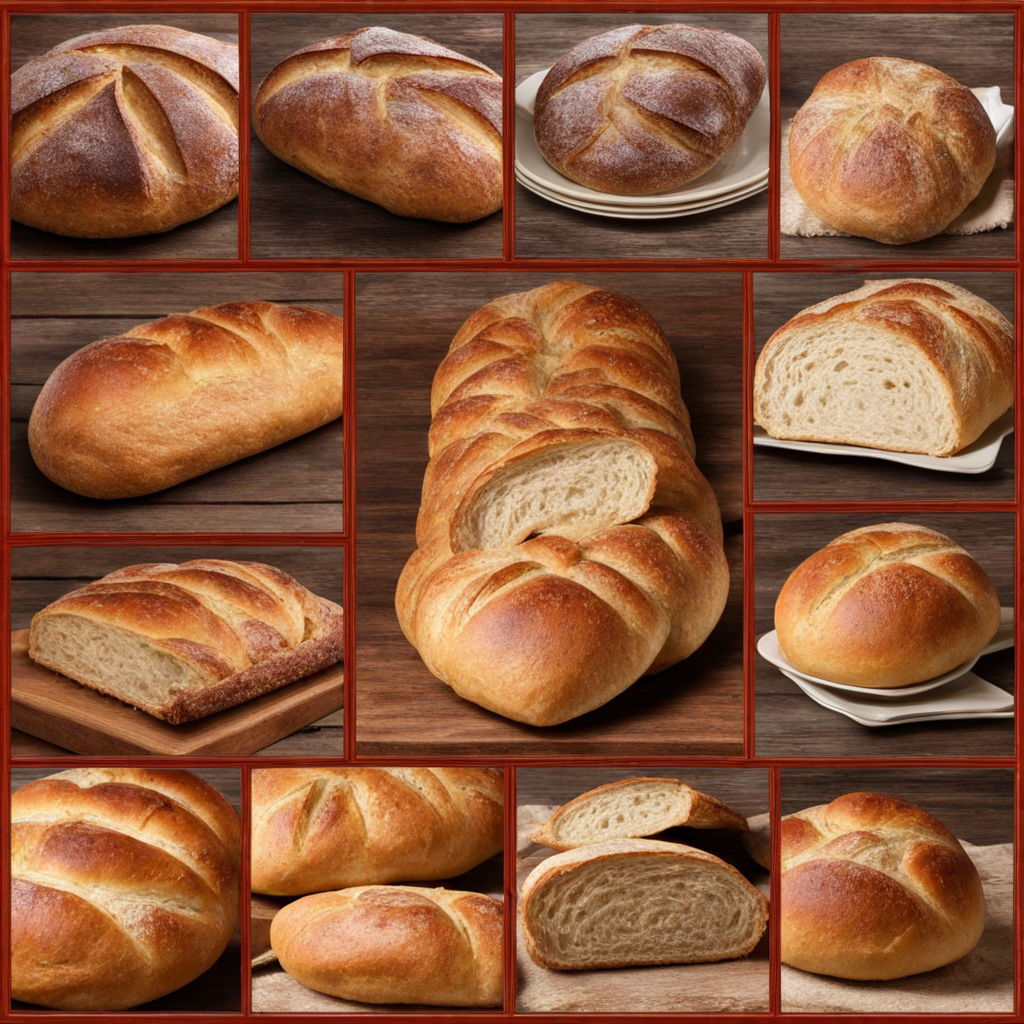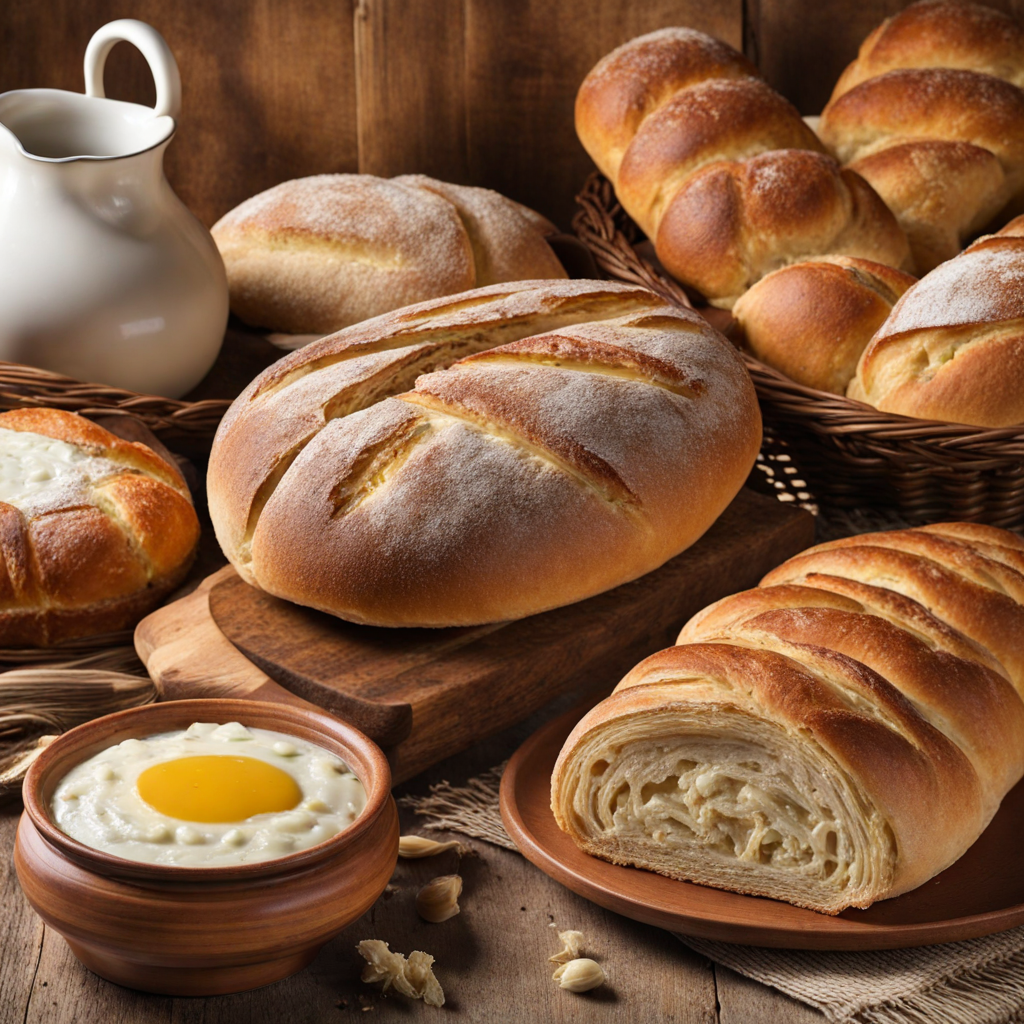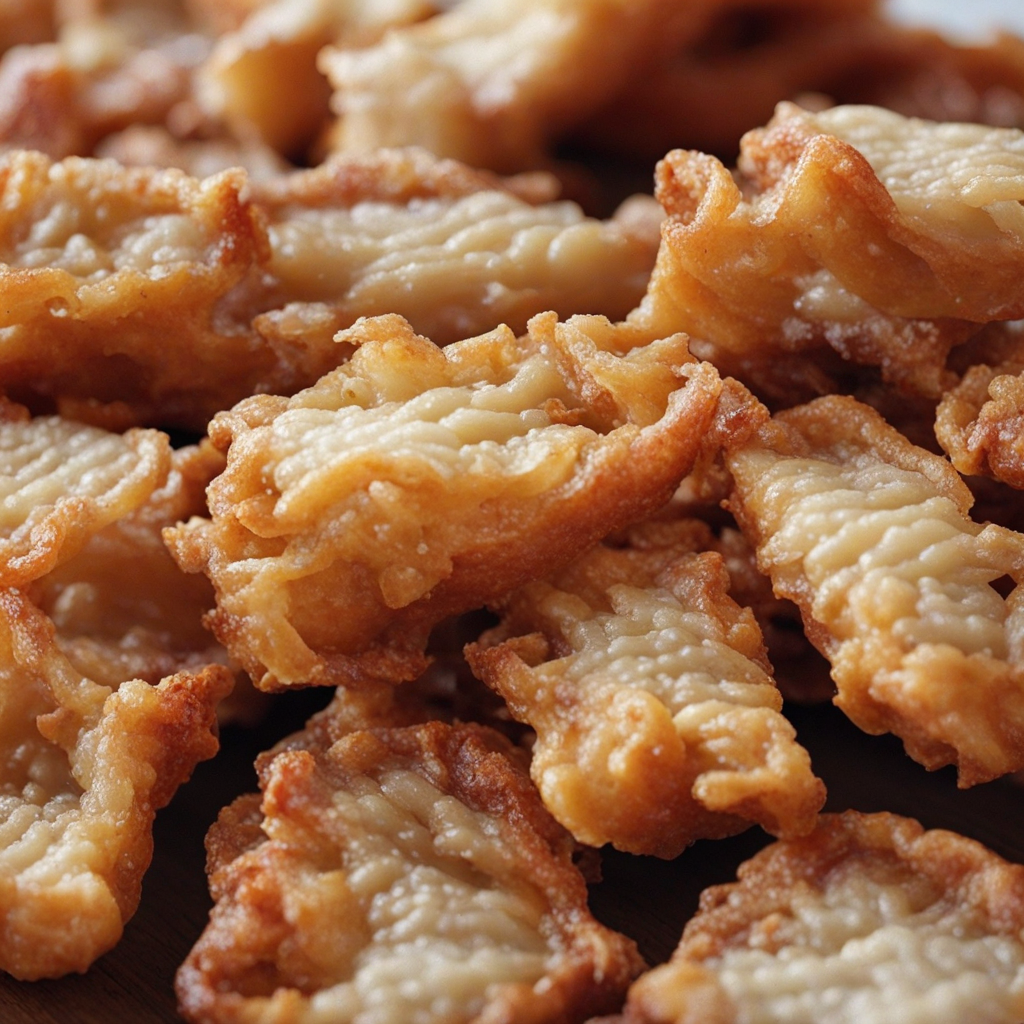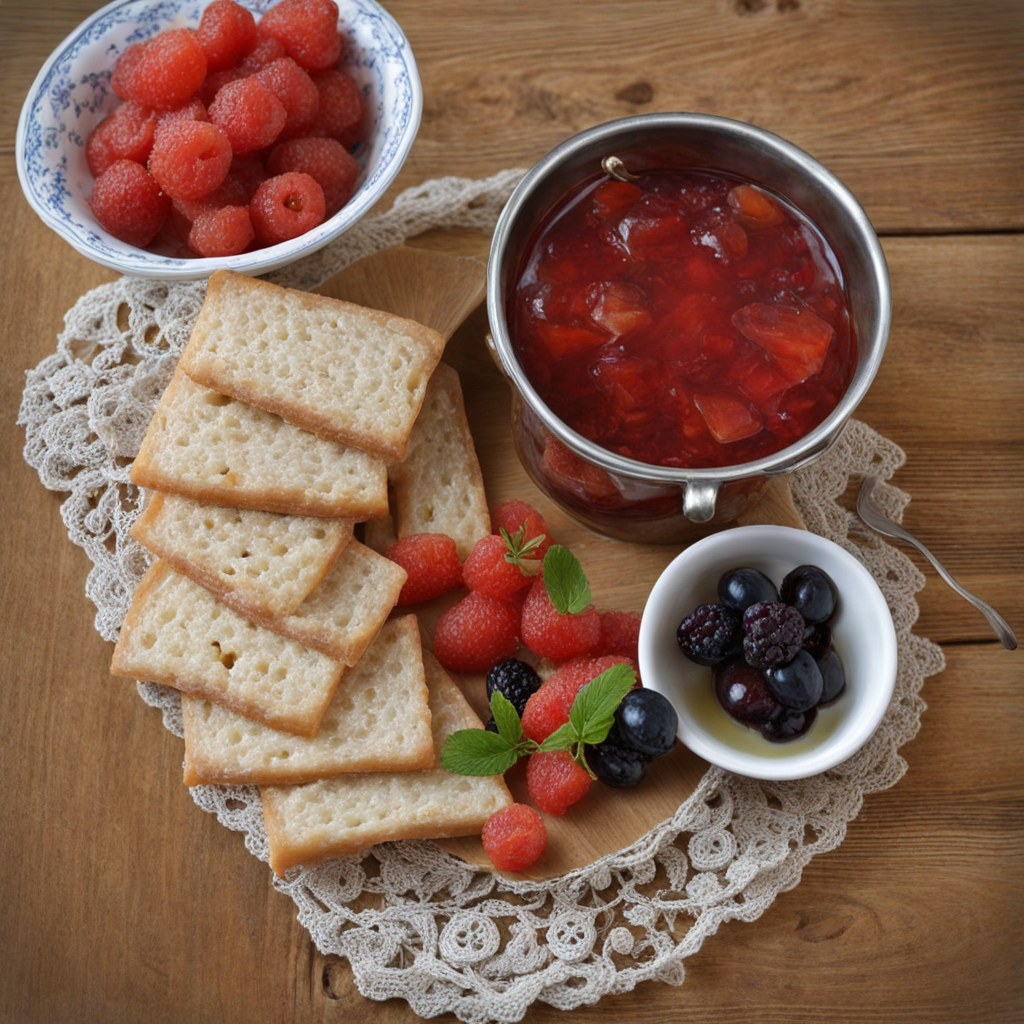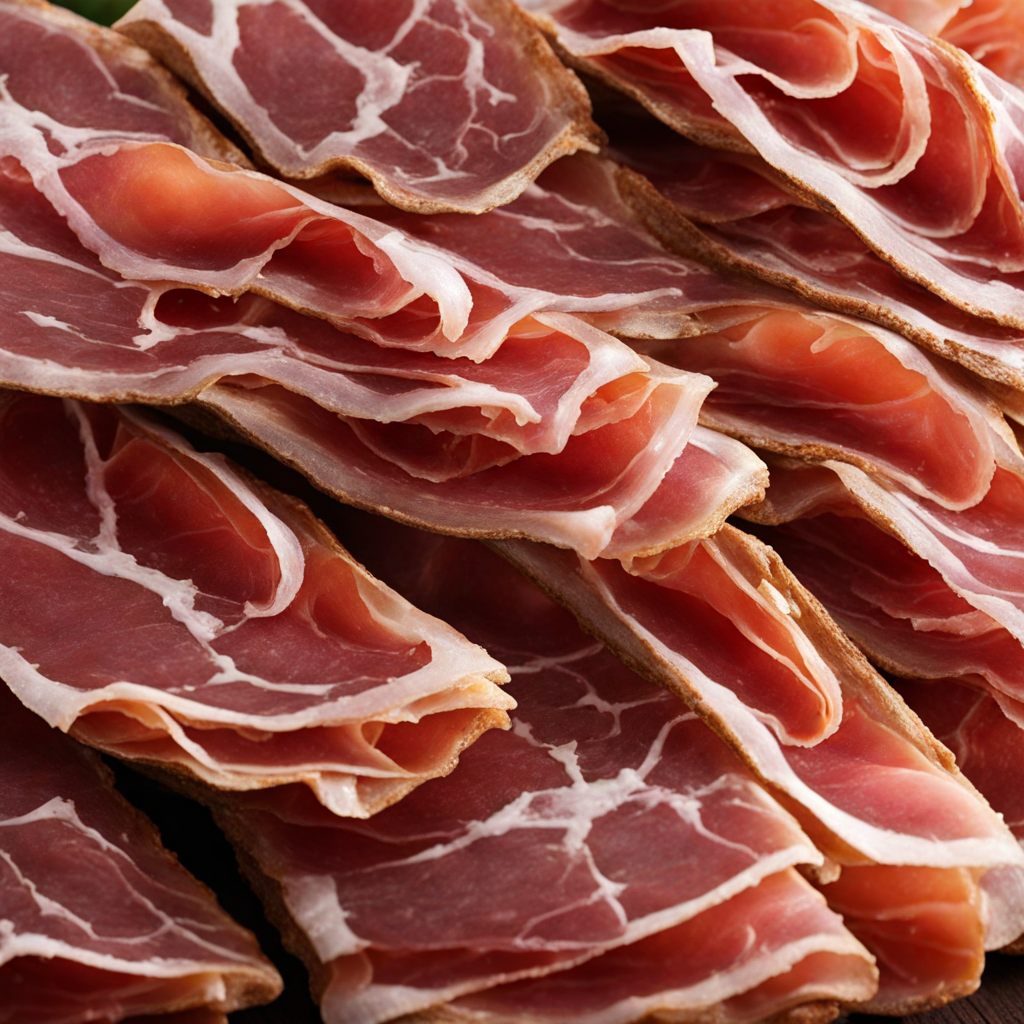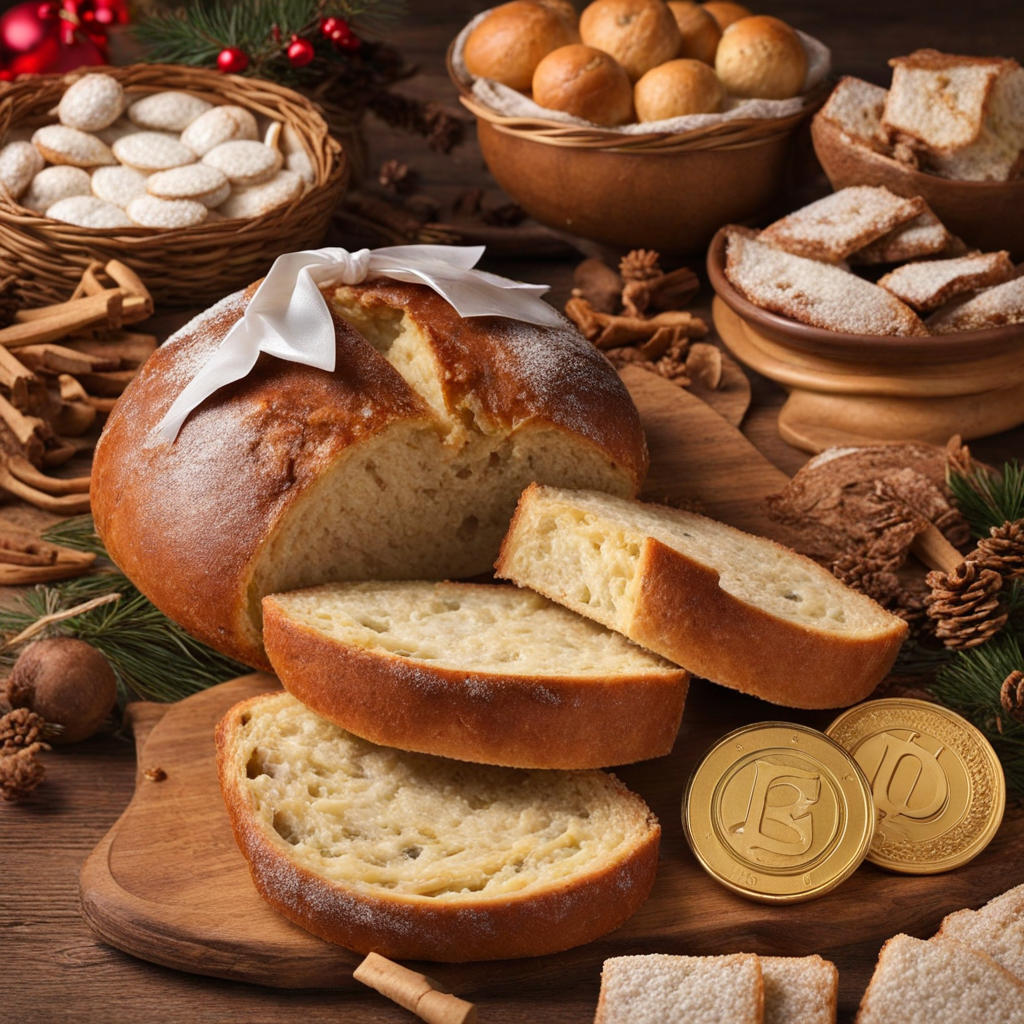Pogača
Pogača is a traditional Serbian bread that embodies the essence of comfort food in the region. This round, flatbread is often characterized by its flaky, soft texture and a golden-brown crust. The dough is typically made from simple ingredients like flour, water, salt, and yeast, which come together to create a beautifully rustic bread. The preparation process involves kneading the dough and letting it rise before shaping it into a round loaf. The surface is often brushed with butter or oil, giving it a rich flavor and a tempting sheen that draws you in. What sets Pogača apart is its versatility and the way it can complement various dishes. While it can be enjoyed plain, it is often served alongside hearty Serbian meals, such as stews or grilled meats, acting as the perfect vehicle to soak up flavorful sauces. In some regions, Pogača is even filled with cheese, herbs, or potatoes, adding another layer of taste and texture. The bread's slightly chewy yet soft crumb makes it an ideal accompaniment, whether you're enjoying a family feast or a casual meal with friends. The experience of tasting Pogača is not just about the flavor; it also connects you to Serbian culture and tradition. It is often shared during gatherings and celebrations, symbolizing hospitality and togetherness. As you take your first bite, you'll notice the subtle, comforting flavors that evoke a sense of home, making it a delightful discovery for anyone looking to explore new culinary horizons. Whether enjoyed fresh from the oven or toasted the next day, Pogača is sure to leave a lasting impression on your palate.
How It Became This Dish
The History of Погача: A Culinary Treasure of Serbia #### Origins: The Birth of Погача Погача, a traditional bread in Serbia, boasts a rich and intricate history that traces back to ancient times. Its roots can be found in the broader spectrum of bread-making traditions across the Balkans and Eastern Europe. The word "погача" is derived from the Latin "panis focacius," a flatbread baked on a hot stone or in embers. This culinary heritage reflects the intersection of Roman, Byzantine, and Slavic influences, illustrating how food serves as a cultural bridge across time and space. Historically, bread has held a sacred place within Serbian society, symbolizing sustenance and community. Погача has been made for centuries, with evidence suggesting its presence as early as the 5th century. It was traditionally prepared during significant events, such as weddings, religious festivals, and family gatherings, establishing its role as a centerpiece in ceremonial occasions. #### Cultural Significance: A Symbol of Community and Tradition In Serbia, Погача is more than just a type of bread; it embodies the spirit of hospitality and familial bonds. Its preparation often involves the participation of family members, transforming a simple baking task into a communal ritual. The act of making Погача is frequently accompanied by storytelling, singing, and laughter, fostering connections among generations. One of the most notable aspects of Погача is its versatility. While it is commonly served as a side dish accompanying various meals, it also plays a significant role during significant life events. For instance, at weddings, the couple often breaks a special ceremonial Погача as a symbol of unity and prosperity. The bread is sometimes adorned with intricate designs, which are believed to convey blessings and good fortune. In many Serbian households, Погача is traditionally prepared with simple ingredients: flour, water, yeast, and salt. However, regional variations have emerged over time, incorporating local flavors and practices. Some families may add herbs, cheese, or even pumpkin, showcasing the adaptability of this beloved bread to personal tastes and regional characteristics. #### Development Over Time: Evolution of Погача As Serbian society evolved through the Middle Ages, Ottoman rule, and the subsequent establishment of the modern Serbian state, Погача adapted alongside these changes. During the Ottoman period, culinary traditions flourished, and the influence of Middle Eastern bread-making techniques began to permeate Serbian kitchens. This cross-pollination resulted in variations of Погача that incorporated spices and new methods of preparation, such as layering techniques that created a flakier texture. In the 19th century, with the rise of nationalism and a renewed interest in folk traditions, Погача experienced a renaissance. Serbian intellectuals and farmers alike began to emphasize the importance of traditional foods as a means of cultural identity. The bread became a symbol of resistance and pride, as it was often associated with rural life and the agrarian way of living that defined Serbian heritage. In contemporary Serbia, Погача has maintained its status as a beloved staple while also embracing modern culinary trends. Today, you can find various adaptations, from rustic homemade versions to gourmet interpretations in upscale restaurants. Chefs experiment with flavors and presentations, blending traditional recipes with contemporary culinary techniques. However, the essence of Погача remains intact, serving as a reminder of its historical roots and cultural significance. #### Погача in Modern Serbian Cuisine In modern Serbian households, Погача is frequently enjoyed at family gatherings, holidays, and celebrations. Its presence on the table signifies warmth and togetherness, making it a vital component of communal meals. During festive seasons such as Christmas and Easter, families often prepare special versions of Погача, imbuing the bread with symbolic meanings tied to the celebration. Moreover, the bread has made its way into the broader culinary landscape of the Balkans. Variants can be found in neighboring countries such as Croatia, Bosnia and Herzegovina, and Montenegro, each with its own unique twist on the classic recipe. This cross-border exchange of culinary traditions underscores the shared cultural heritage of the region, emphasizing how food can unite diverse communities. In recent years, the global interest in ethnic cuisine has further elevated the status of Погача. Serbian diaspora communities around the world have embraced their culinary traditions, with Погача becoming a symbol of identity and nostalgia for those living abroad. As a result, it is not uncommon to find Погача featured in Serbian restaurants and cultural festivals in countries like the United States, Canada, and Australia. #### Conclusion: A Culinary Legacy The journey of Погача from its ancient origins to its modern interpretations is a testament to the resilience and adaptability of culinary traditions. This beloved bread has not only survived the test of time but has also thrived amid changing cultural landscapes, embodying the essence of Serbian identity. As you sit down to enjoy a piece of Погача, whether it be at a family gathering or a festive celebration, you partake in a rich tapestry of history, culture, and community. Each bite carries with it the stories of generations who have kneaded the dough, baked it in warm ovens, and shared it with loved ones. In essence, Погача is not merely food; it is a celebration of life’s moments, a bridge connecting the past with the present, and a profound expression of what it means to be part of the Serbian cultural narrative. In this way, Погача stands as a culinary treasure, embodying the enduring spirit of Serbian hospitality and the deep-rooted traditions that continue to thrive in the heart of the Balkans.
You may like
Discover local flavors from Serbia


